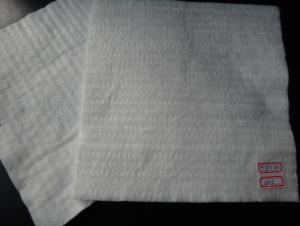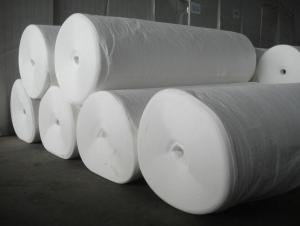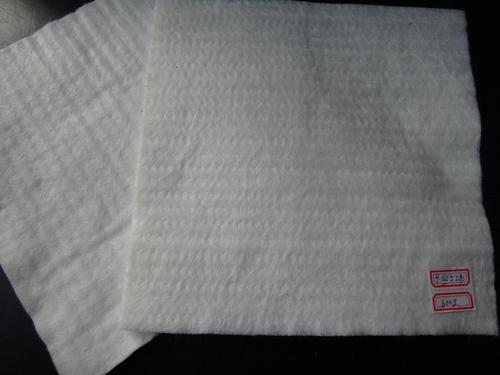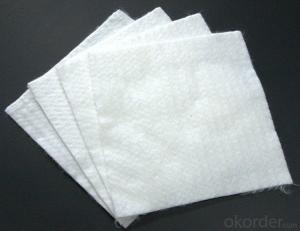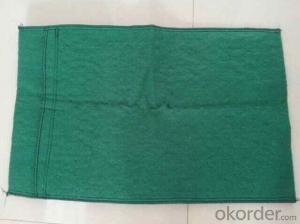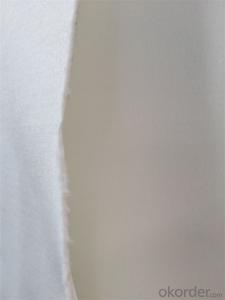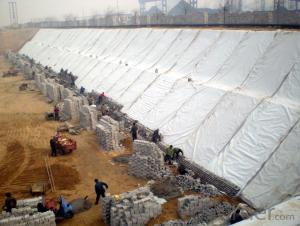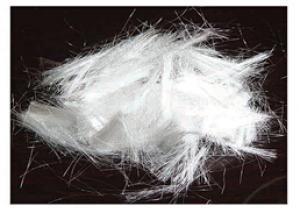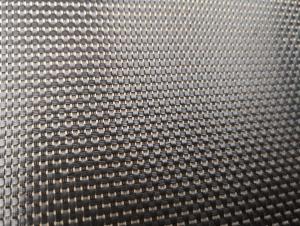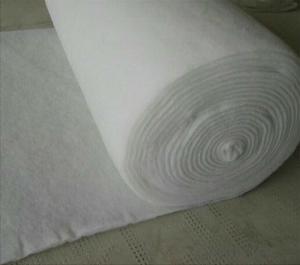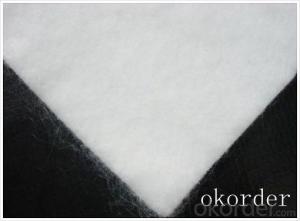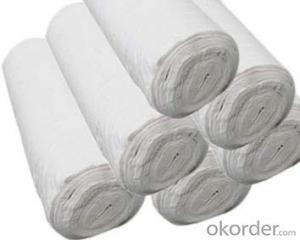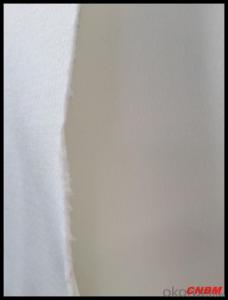High Strength Non Woven Geotextile Membrane for Artificial Grass in Road and Railway Construction
- Loading Port:
- Tianjin
- Payment Terms:
- TT OR LC
- Min Order Qty:
- -
- Supply Capability:
- 5000rolls m²/month
OKorder Service Pledge
OKorder Financial Service
You Might Also Like
High Strength non woven geotextile for Road andRailway construction :
Made from PP (polypropylene) or PET (polyester) short fiber by nonwoven needlepunched manu-
Facturing process, it has isolation, filtration, drainage, reinforcement,protection and maintenance
etc. Function.
Specification of HighStrength nonwoven geotextile for Road and Railway construction :
1.80G/M2 - 1500G/M2
2. Lm-8m in roll width, the length as clients ' request
Property of HighStrength nonwoven geotextile for Road and Railway construction :
I. Good flexibility, resistant to corrosion, resistant to acids and alkalis,anti-oxidation
2. Separation, filtration, drainage, reinforcement, protection, and maintenancefunction
Application of HighStrength nonwoven geotextile for Road and Railway construction :
1.. Water conservancy project and hydropower project
2. Road paving, railway
3. Airport and port
4. River bank protection and tunnel
5. Environmental protection, etc
Production standard HighStrength nonwoven geotextile for Road and Railway construction :
G B/T17638-1998
JT/T 520-2004
- Q: Principle of drainage pipe geotextile
- Principle of drainage pipe geotextile
- Q: Can geotextiles be used in shoreline revetment projects?
- Yes, geotextiles can be used in shoreline revetment projects. Geotextiles are commonly used to stabilize shorelines and prevent erosion by reinforcing the soil and providing filtration. They can be placed between the soil and the revetment materials to enhance the strength and stability of the structure while also allowing water to drain through, reducing the risk of wave damage.
- Q: Can geotextiles be used for reinforcement in asphalt overlays?
- Yes, geotextiles can be used for reinforcement in asphalt overlays. Geotextiles act as a separator and provide reinforcement by distributing stress and preventing the mixing of different layers. They help in reducing reflective cracking and increasing the lifespan of the asphalt overlay.
- Q: Does the color cloth be geotextile?
- Straw, sacks, stone, gravel, wood, steel, color cloth, lighting equipment, transport, alarm equipment, digging tools, lead wire, cement, soil, sand, geotextile and so on.
- Q: Are geotextiles suitable for use in gabion walls?
- Yes, geotextiles are suitable for use in gabion walls. Geotextiles can be used as a filter fabric to prevent soil erosion and improve the stability and longevity of the gabion wall structure. They help to control soil movement and provide additional reinforcement, making them a practical and effective solution for gabion wall construction.
- Q: Can geotextiles be used in the protection of pipelines?
- Yes, geotextiles can be used in the protection of pipelines. Geotextiles are commonly employed as a protective layer to prevent damage to pipelines caused by external factors such as soil erosion, chemical exposure, and mechanical impacts. They act as a barrier between the pipeline and the surrounding soil, providing cushioning and reducing the risk of abrasion or puncture. Geotextiles also help to distribute the loads and stresses evenly, enhancing the overall stability and longevity of the pipeline system.
- Q: How do geotextiles help with asphalt overlay?
- Geotextiles help with asphalt overlay by providing reinforcement and stabilization to the underlying soil, preventing it from shifting or settling. This helps to increase the longevity and durability of the asphalt overlay, as well as reducing the occurrence of cracks and potholes.
- Q: How are geotextiles tested for permeability?
- Geotextiles are tested for permeability using standard laboratory methods, such as the constant head or falling head permeability tests. These tests involve measuring the flow of water through the geotextile under controlled conditions, allowing engineers to determine its permeability and suitability for various applications.
- Q: What are the specifications for geotextiles and geogrids commonly used on expressways?
- You are the production, or sales, or procurement, the question asked, what model is the designer's decision
- Q: 1 square of non-woven geotextiles how many tons
- Do not understand what you ask? Asked very contradictory ah
Send your message to us
High Strength Non Woven Geotextile Membrane for Artificial Grass in Road and Railway Construction
- Loading Port:
- Tianjin
- Payment Terms:
- TT OR LC
- Min Order Qty:
- -
- Supply Capability:
- 5000rolls m²/month
OKorder Service Pledge
OKorder Financial Service
Similar products
Hot products
Hot Searches
Related keywords
